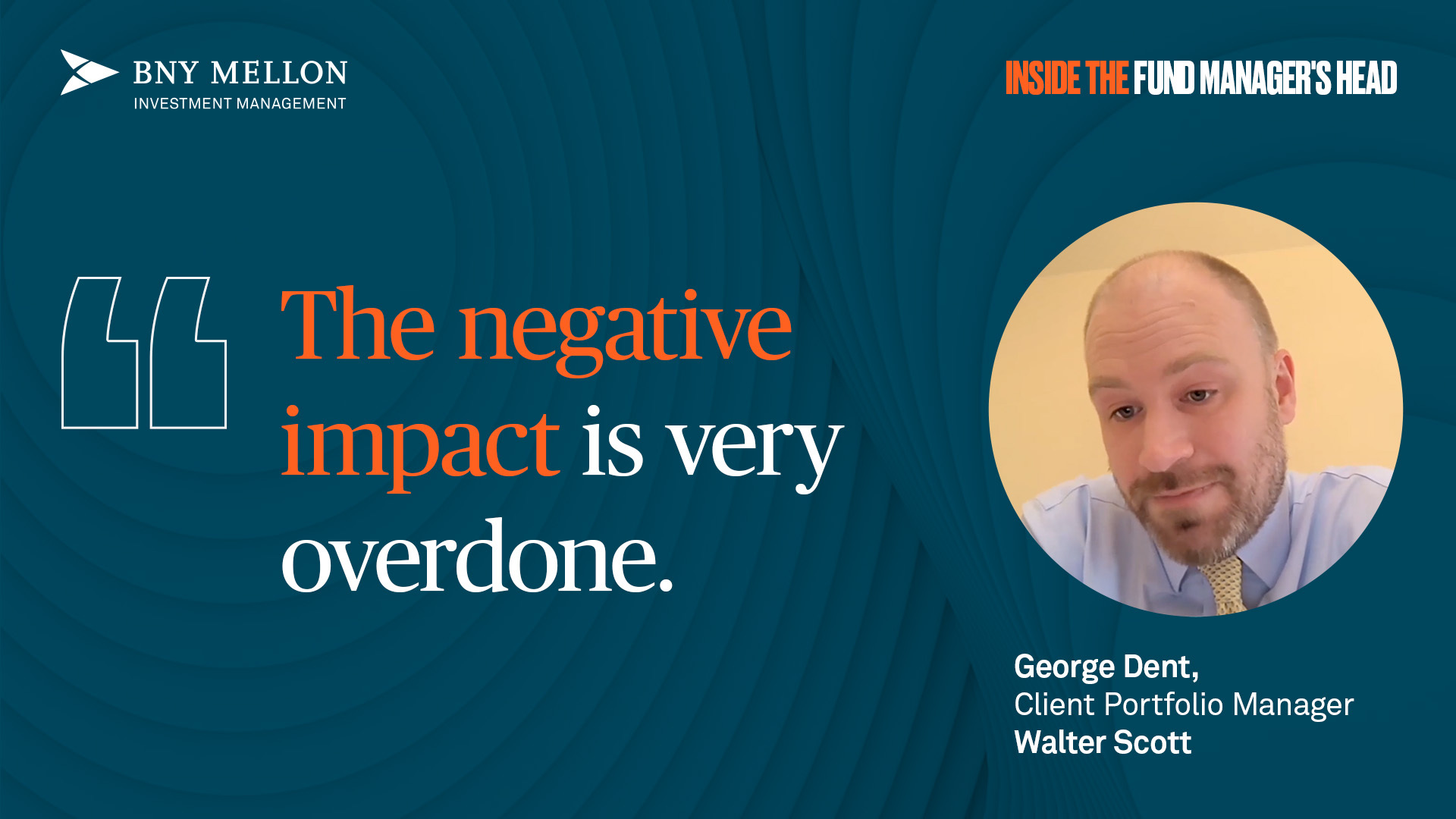High yield and investment grade credit markets continue to look very attractive on a multi-year horizon. In fact, we find the market as attractive as it has been in nearly two decades. High yield looked great at the tail end of 2023 with the yield-to-worst on the Bloomberg US High Yield Corporate Index pushing over 9%.
At end of March 2024, it was 7.7%, which is still above 15-year averages. Likewise, yields in investment grade credit also look appealing. The yield-to-worst on the Bloomberg US Corporate Investment Grade Index is above 5%, again a multi-year high. This still represents a good starting point and is also one of the main reasons we are positive on bonds this year.
Spreads are skinny, which may become an issue if we don’t achieve the immaculate disinflation
Within credit markets however, the level of the credit spread, which represents the premium for taking on additional risk of default, is eye-wateringly low. Looking at the Bloomberg US High Yield Corporate Index, credit spreads sit at 320bps, which is the lowest that it has been in the past 15 years.
In an asset class such as high yield, this is important as it is the asset class at most risk of defaults. The picture is exactly the same when we look at investment grade credit.
This differentiation between yields and spreads has been very topical in the past 12 months. We realize that the attractiveness of fixed income is the all-in starting yields. It is important to be aware, however, that of this headline yield, credit spreads now represent a smaller proportion compared to history.
To put it in perspective, credit spread is only 42% of the overall yield that we can now extract from the high yield market and the rest is from government bonds. And the picture is even more stark in investment grade credit, where spreads are just 17% of the overall index yield.
Why does this matter?
We are not bearish on the economic outlook per se. In fact, we think growth will be reasonable going forward. However, we are aware that corporate credit is a ‘mean reverting’ asset class. There is a minimum amount of default risk that needs to be baked into credit spreads in order to compensate us as investors for that risk.
We never know what the future holds, but we know that when we see these levels of credit spreads, the cushion that we have in credit markets against any sort of exogenous shocks is minimal. In other words, it could take very little in the news for the market to suddenly wake up and panic and for credit spreads to sell off.
Furthermore, at current spread levels, we think that the market is pricing in an immaculate disinflation ahead of us, the Federal Reserve manages to achieve the perfect soft landing, and inflation lands at 2% in the next year, while employment and growth remain resilient.
This certainly is one of the possibilities. In fact, this scenario has increased in probability exponentially over the past 12 months. However, it is not the only scenario and there are a few more possible paths that the global economy can take.
Not all of them have the same probability of occurring. What is important, however, is that any other economic scenario ahead of us could prove that either government bonds, high yield or investment grade credit (if not all) are incorrectly priced at current valuations.
Possible scenarios – four scenarios among many in 2024:
Being very flexible is key to capturing attractive bond yields while navigating pitfalls. When we look at the bond market, we see multi-year wide index level yields. However, we also see multi-year tight credit spreads that could sell off in all but one scenario.
This makes us want to: 1) definitely be exposed to bond markets in order to extract that yield that we have not seen in decades but, 2) we want to be exposed to the part of the markets that looks cheaper (yields), while minimizing exposure to the part of the market that looks like it has little further room to outperform (spreads) at this point in time.
For this reason, in our strategic bond strategies, we maintain a headline yield of near 7% in the portfolios but have tactically reduced our credit risk exposure at the moment. We do not have an immediate catalyst for a spread sell-off, however we know that one always comes.
We stand ready to increase our credit risk once we see better compensation for default risks, while in the meantime we continue to enjoy the overall high income that we can now extract from bonds.
Alex Pelteshki is co-manager of the Aegon Strategic Bond fund. The views expressed above should not be taken as investment advice.





